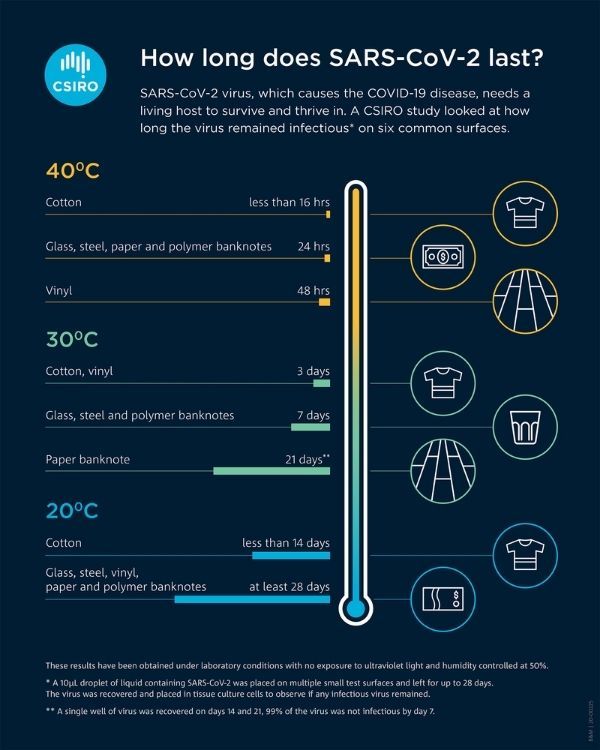
A recent CSIRO study has found that novel coronavirus was still detectable on certain surfaces over 28 days after initial exposure.
Research was undertaken at the Australian Centre for Disease Preparedness (ACDP) to determine the effect of temperature on virus persistence. The study involved drying the virus in an artificial mucus and applying it to a variety of surfaces. Concentrations of the virus in each application were similar to those found in infected patients, with samples kept away from UV light and stored at 20°C, 30°C and 40°C.
The study found that the virus was “extremely robust” at a temperature of 20°C. However, it was increasingly shorter-lived as the ambient temperature increased.
Of particular relevance to the food industry was the finding that the virus survived the longest on smooth, non-porous surfaces. In other words, glass, banknotes, stainless steel, and other materials that businesses interact with daily.
“Our results show that SARS-CoV-2 can remain infectious on surfaces for long periods of time, reinforcing the need for good practices such as regular hand-washing and cleaning surfaces”, said ACDP Deputy Director Dr. Debbie Eagles.
ACDP Director Professor Trevor Drew also weighed in, explaining that the length of time a virus could be viable on hard surfaces was variable. Viability, as Professor Drew noted, “depends on the type of virus, quantity, the surface, environmental conditions and how it’s deposited – for example, touch vs. droplets emitted by coughing.”
Concerning future implications for the food industry, Professor Drew noted that the "research may help to explain the apparent persistence and spread of SARS-CoV-2 in cool environments with high lipid or protein contamination, such as meat processing facilities and how we might better address that risk.”
 © Copyright CSIRO Australia, 12 Oct 2020
© Copyright CSIRO Australia, 12 Oct 2020
Study results which investigated how long SARS-CoV-2 survived on six different surfaces at three temperatures, 20, 30 and 40 degrees celsius.
Article posted by Food Safety Select
Article posted by: Food Safety Select
As a food business owner, you understand the impor...
View MoreFoodborne illness is a significant concern for Aus...
View MoreThe food industry is no stranger to the threat of ...
View MoreAs a food business owner, it's crucial to ensu...
View More_1.png)